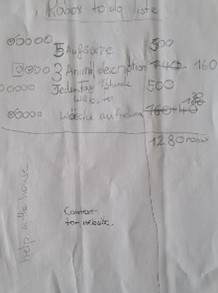Description
My daughter Antonia enjoys playing Roblox with their best friend, who lives in Australia. In general, I think, playing computer games is part of a healthy childhood and it warms my heart when I hear Antonia’s and her friend’s voice when they discuss their moves in the MS Teams meeting they have in parallel to playing the game.
However, I try to limit my daughter’s screen time since there are so many other things to explore. Therefore, my daughter has less chance to accumulate credits, which are awarded by the game and she cannot purchase fancy outfits for her avatar, upgrade her virtual home or get better digital toys.
This frustrated her and we had to find a solution. First of all, she educated me in the workings of the game “Adopt Me” and I learned that you can either earn credits or purchase Robux with real money using the parents’ credit card.
I have to say, it looks like a complete waste of money to me, spending real money on tokens in a virtual world without getting anything physical in return. This said, I need to face the fact that I am not a 9-year old digital native. It might be me who is not comprehending things properly, not her.
Let’s do it!
We came up with the idea that she could still earn her purchasing power in the virtual world. Instead of accumulating riches by playing hour after hour by herself, she would complete tasks in the real world and I would reward her in exchange. Antonia claimed that she would need around 1300 Robux to fulfill her wishes, which cost around EUR 15.
Next, I laid out what I wanted her to do, which was:
- Practice creative writing in German – which she dislikes
- Experiment with the website toolbox I had installed on her ipad
- Create content for that ipad. She had been toying with the idea of building up an animal lovers/activist community 😉
- Help me in the household
Based on this list Antonia made a calculation, which would allow her to earn the required Robux within one week if she worked really hard.

These were her assumptions:
- For creating one piece of writing she would get 100 Robux.
- Experimenting with her website toolbox for one hour would be another 100 Robux.
Now comes the hard part…
These were the two hardest, most tedious and boring tasks. This is what “complexity” is to a 9-year-old, I assume.
- On top of this, she promised me to write three pieces of content for her website, which would cost me about 50 Robux each. She would probably need one hour for each of these texts including research but since this is something she enjoyed, it was “cheaper”.
- Helping in the household would be around 10 Robux per day for an unspecified amount of work. This was so little since she accepted the fact that this actually are duties she should not get paid for.
When I looked at the result, I realized that Antonia had naturally come up with a logic that resembled story points in a kind of reverse-engineering kind of approach. Agile (IT) project teams utilize story points as a metric to estimate effort. The rule is that the people who will do the work and know best what is easy and what is hard for them do the story point estimation. It takes the actual skill level and context of the team in account. It is important to highlight that the unit of measurement is not time. There is no clear definition of it or Excel tools for calculation. Story points are by nature unprecise and include qualitative aspects of a task and therefore always had looked a bit esoteric to me.
“Time needed” is not the right metric to assess enjoyable tasks and yucky stuff.
Now finally, I understood: A story in German, written according to a fixed structure and with no spelling mistakes allowed, is a pain and therefore must cost double of the inspirational task of composing a story about adorable animals in danger of extinction, illustrated with lovely pictures. This made total sense even if the time to do them might be exactly the same.
Story points are so confusing in real IT projects because they do neither help to predict billable hours nor delivery dates. Still, Antonia has applied something like it without prior knowledge. I suddenly realized where the power of story points lies. It is the fact that it acknowledges the struggle by an individual or team to do something well. This is an empowering experience and fair.
What makes this an agile parenting tool?
- Story points highlight the effort someone needs to get somewhere. At the same time, it reflects value which is directly linked to respect and appreciation.
- As always, communication and alignment are key. You might have a different idea about how hard something is than your team members. Only the one who does the job knows how much it costs her. This should be heard.
- Our usual metrics like time spent on a task, pages written for an essay, mark of a test, certificates do not necessarily reflect the amount of real learning. Agile parents value the process not just the result.
Please share with us your thoughts on metrics that reflect progress for your kids or your family. This could be hours NOT spent on the ipad, number of peaceful dinners per week without aggression and finger-pointing, times your son initiated to take a bath without you having to drag him there. What do you think? Please share your thoughts in the comment box.


